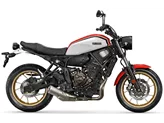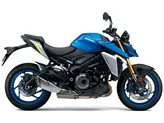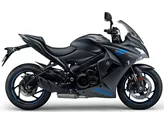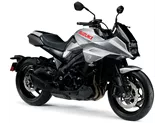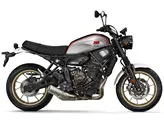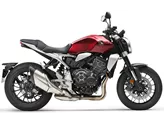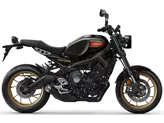Suzuki GSX-S1000 2016 vs. Yamaha XSR700 2016

Suzuki GSX-S1000 2016

Yamaha XSR700 2016
Vue d’ensemble - Suzuki GSX-S1000 2016 vs Yamaha XSR700 2016
In terms of engine power, the Suzuki GSX-S1000 2016 clearly outperforms the Yamaha XSR700 2016 with 149 HP compared to 75 HP. This makes the Suzuki more suitable for riders looking for a more powerful and thrilling riding experience. Additionally, the Suzuki has a higher torque of 106 Nm compared to the Yamaha's 68 Nm, providing better acceleration and overall performance.
Both bikes are equipped with fuel injection systems, ensuring efficient fuel consumption and smooth throttle response. However, the Suzuki has a larger engine displacement of 999 ccm compared to the Yamaha's 689 ccm, which contributes to its higher power output.
In terms of suspension, the Suzuki features an upside-down telescopic fork at the front, providing better stability and control during cornering. The Yamaha, on the other hand, has a standard telescopic fork. Both bikes have a swing arm rear suspension with a monoshock absorber, ensuring a comfortable ride.
The chassis of the Suzuki GSX-S1000 2016 is made of aluminum, which is known for its lightweight and rigid properties, contributing to better handling and maneuverability. The Yamaha XSR700 2016, on the other hand, has a steel frame, which may result in a slightly heavier overall weight.
Both bikes are equipped with double disk brakes at the front, ensuring reliable and efficient stopping power. The Suzuki has larger brake disks with a diameter of 310 mm compared to the Yamaha's 282 mm. Both bikes have four-piston calipers, providing excellent braking control.

Suzuki GSX-S1000 2016
Both the Suzuki and the Yamaha are equipped with advanced rider assistance systems, including ABS, ensuring safe and controlled braking in various road conditions.
In terms of dimensions and weights, both bikes have similar front tire widths of 120 mm and rear tire diameters of 17 inches. However, the Suzuki has a wider rear tire width of 190 mm compared to the Yamaha's 180 mm. The Suzuki also has a longer wheelbase of 1460 mm compared to the Yamaha's 1405 mm. Both bikes have a seat height of 815 mm, providing a comfortable riding position for most riders.
The Suzuki GSX-S1000 2016 has a slightly higher kerb weight of 209 kg compared to the Yamaha's 186 kg. However, considering the Suzuki's more powerful engine, this weight difference is expected.
In terms of fuel tank capacity, the Suzuki has a larger capacity of 17 liters compared to the Yamaha's 14 liters, providing a longer range between refueling.

Yamaha XSR700 2016
In terms of strengths, the Suzuki GSX-S1000 2016 offers a powerful engine, good braking control, a stable and sensitive chassis, a comfortable seating position, and a relatively low price compared to other bikes in its class.
On the other hand, the Yamaha XSR700 2016 has strengths such as an elastic motor, direct transmission, easy handling, and good build quality.
However, the Suzuki GSX-S1000 2016 has some weaknesses, including a front end that may appear too aggressive for some riders and a throttle response that can be too sensitive in the lower rev range.
The Yamaha XSR700 2016, on the other hand, has a slightly softer chassis and a seating position that may require some getting used to.
Overall, both the Suzuki GSX-S1000 2016 and the Yamaha XSR700 2016 have their own strengths and weaknesses, and the choice between them ultimately depends on the rider's preferences and priorities.
Caractéristiques techniques Suzuki GSX-S1000 2016 par rapport à Yamaha XSR700 2016
Avantages et inconvénients en comparaison
Avantages et inconvénients en comparaison
Suzuki GSX-S1000 2016
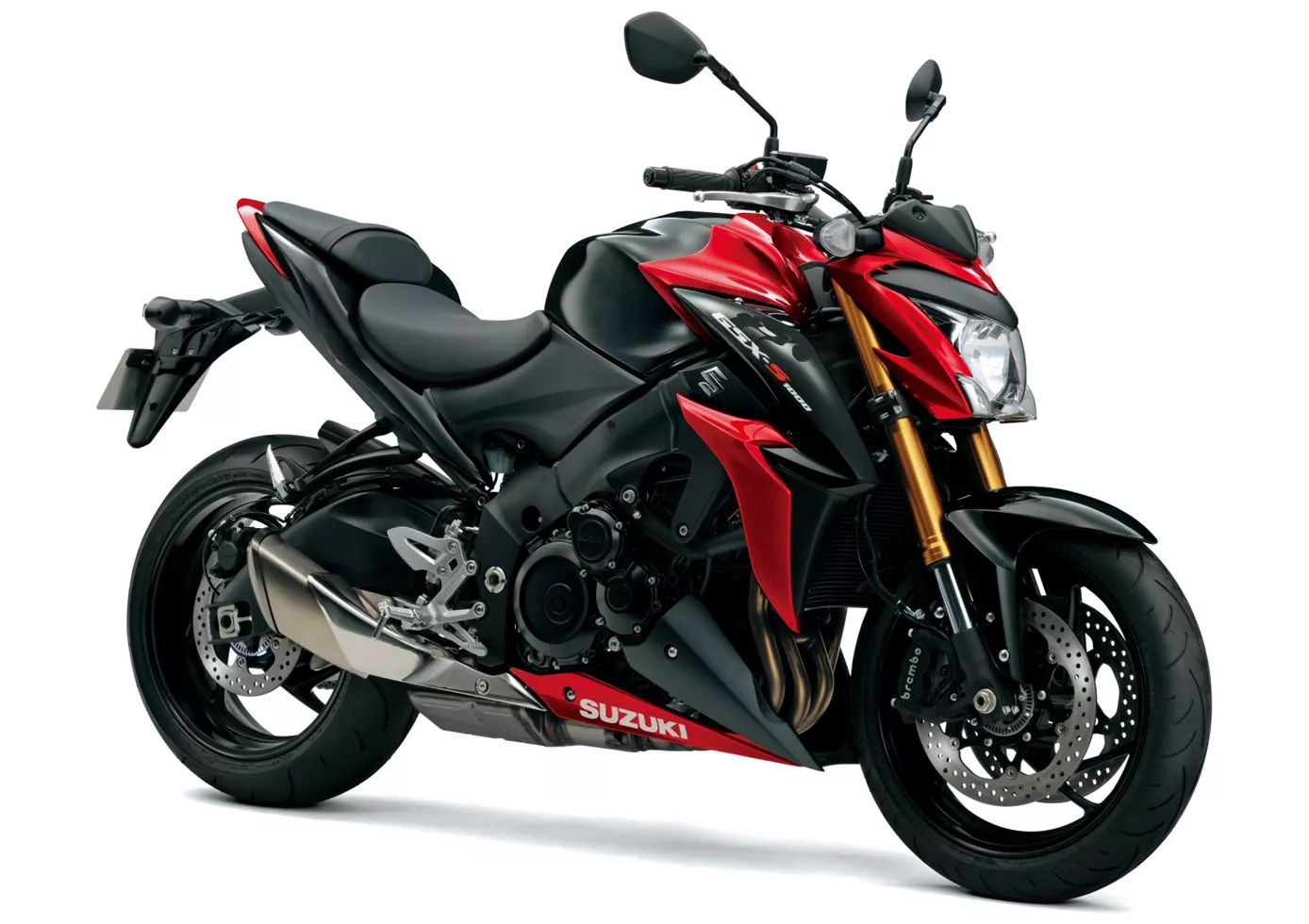
Certains pourraient s'étonner qu'après avoir attendu si longtemps, Suzuki n'ait pas lancé sur le marché la power naked bike ultime et sans compromis. Au lieu de cela, la Suzuki GSX-S 1000 semble presque trop sage avec ses 149 CV. Mais si on la conduit sur une piste de course, on se rend vite compte que le moteur est bien plus puissant dans la vie réelle et que le reste des performances du châssis et du système de freinage sont également remarquables. En outre, elle offre une bonne dose d'aptitude à l'usage quotidien et pratique - ce qui n'est pas un mauvais ingrédient lorsqu'on doit tout couvrir avec une seule moto, du quotidien à la piste de course.
Yamaha XSR700 2016

Si l'on veut une moto d'entrée de gamme avec laquelle on sera longtemps heureux, mais qui a en même temps un look rétro cool, on ne peut pas passer à côté de la Yamaha XSR 700. Avec la MT-07 comme base technique, on achète probablement la moto pour débutants la plus populaire du moment - mais dans une autre présentation. Le plus grand atout de la XSR 700 est son bicylindre en ligne incroyablement élastique, qui ne surcharge pas les débutants et n'ennuie pas les motards expérimentés. La réponse à l'accélération est agréablement directe et la puissance se déploie de manière très harmonieuse, il n'y a jamais de moment 'hop'. Toutefois, la XSR 700 doit être considérée comme un cruiser décontracté plutôt que comme une moto sportive. Le châssis se cabre très facilement en conduite rapide et apporte de l'insécurité au véhicule. Les pilotes expérimentés s'en sortiront facilement, mais les débutants risquent d'être dépassés.
Comparaison des prix Prix moyen du marché Suzuki GSX-S1000 vs Yamaha XSR700
There are a few key differences between a Suzuki GSX-S1000 2016 and a Yamaha XSR700 2016. In terms of price, the actual average price of a Suzuki GSX-S1000 2016 is about 25% higher. A Suzuki GSX-S1000 2016 experiences a loss of 90 USD in one year of ownership. This is offset by a loss of 100 USD for a Yamaha XSR700 2016. Compared to Yamaha XSR700 2016 there are more Suzuki GSX-S1000 2016 bikes available on the 1000PS.de Marketplace, specifically 10 compared to 9. It takes less time to sell a Yamaha XSR700 with 85 days compared to 109 days for the Suzuki GSX-S1000. Since model year 2015 1000PS.de editors have written 36 reviews for the Suzuki GSX-S1000 and 26 reviews for the Yamaha XSR700 since model year 2015. The first review for the Suzuki GSX-S1000 was published on 9/27/2014 and now has more than 17,100 views. This compares to more than 13,700 views for the first review on Yamaha XSR700 published on 7/22/2015.


